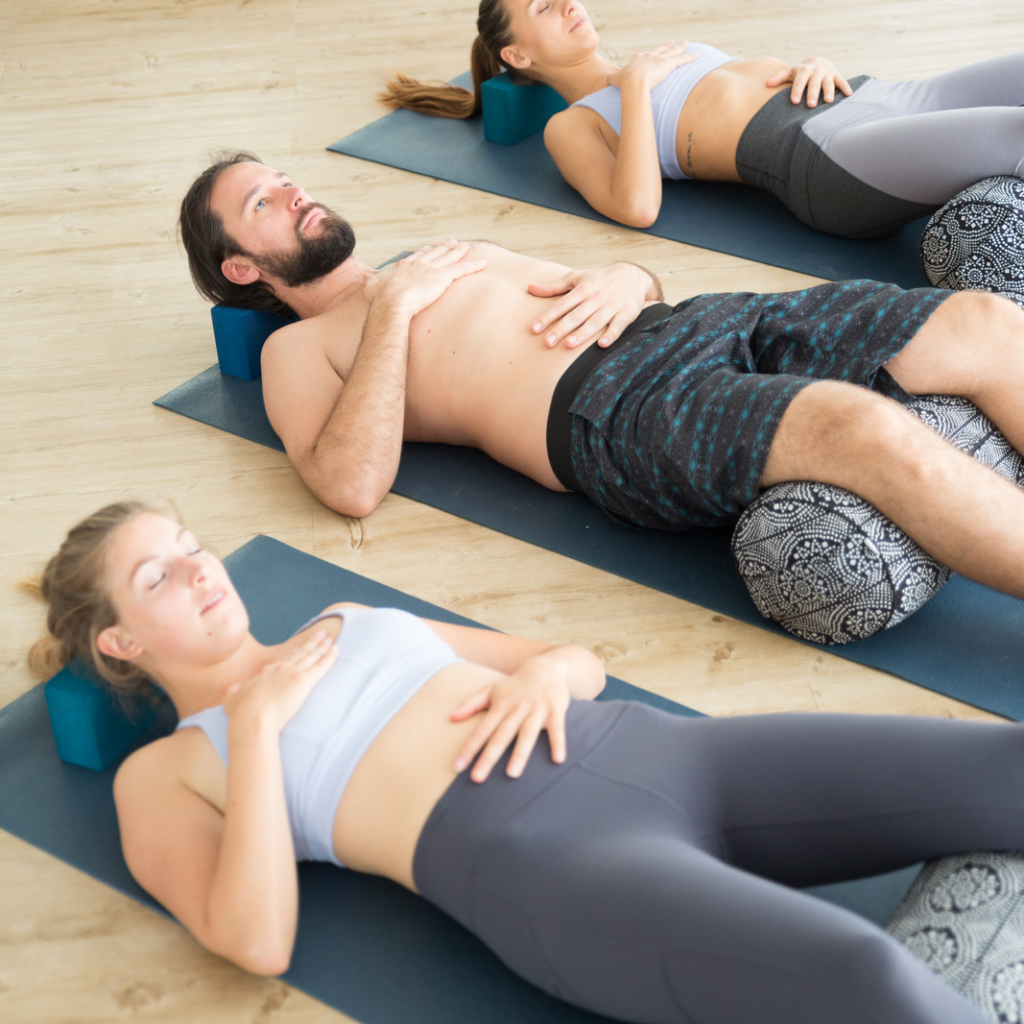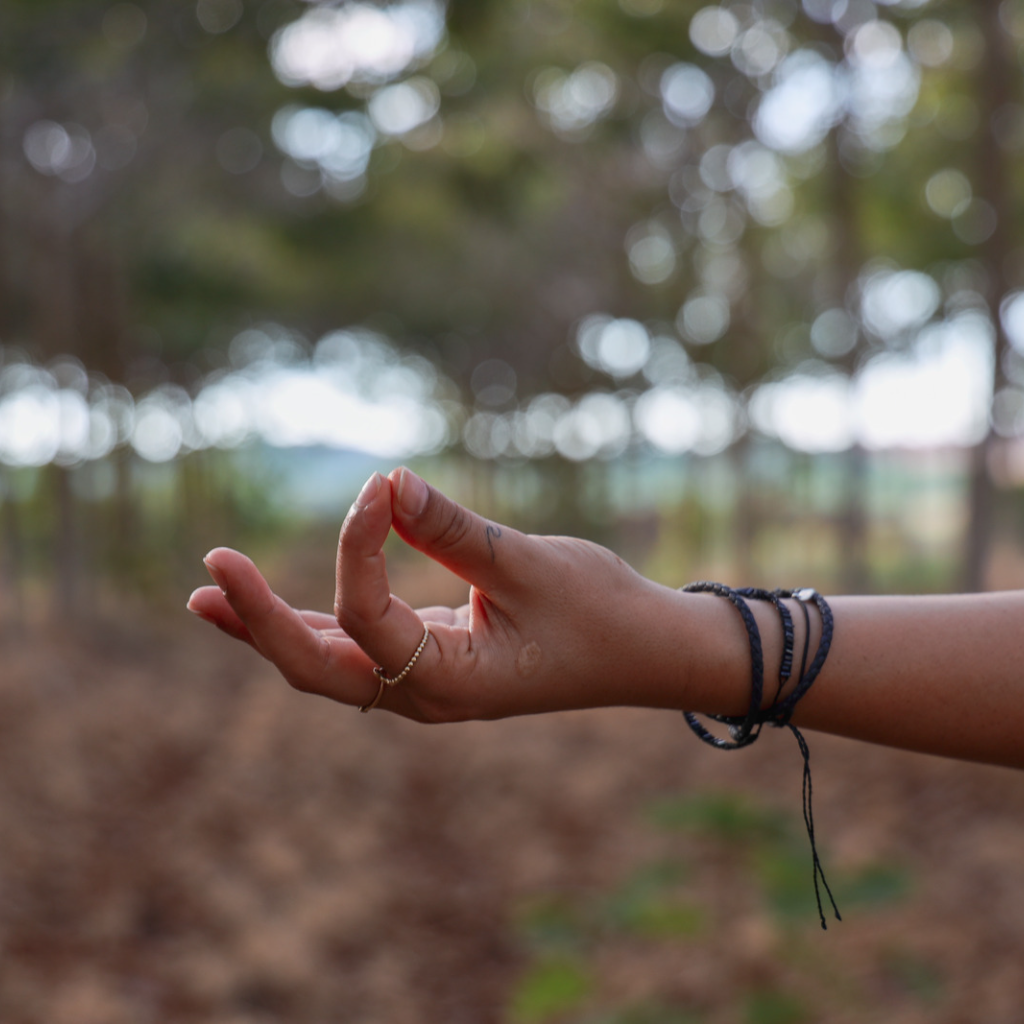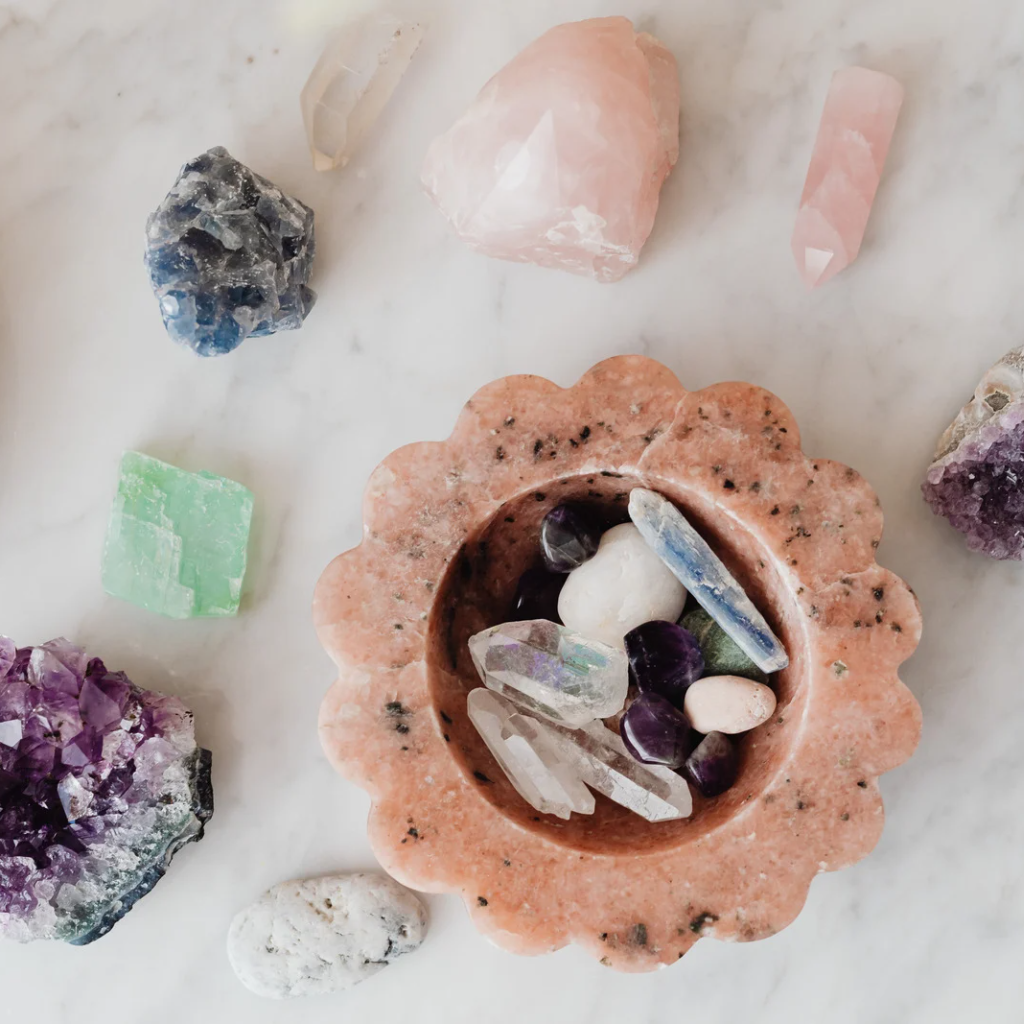The Difference Between Yin and Restorative Yoga
First off, both Yin and Restorative yoga are gentle, slow-paced practices that emphasize relaxation and restoration. They are great for reducing stress and tension in the body and mind, and for promoting overall health and wellbeing. However, there are some key differences between the two styles that are worth exploring.

What Is Yin Yoga?
Yin yoga is all about finding stillness and surrendering into deep stretches for extended periods of time, typically ranging from two to five minutes or even longer. It involves holding poses that target the deeper connective tissues of the body, such as the joints, ligaments, and fascia. These poses are usually done on the floor and are passive, meaning you use gravity to help you sink deeper into the stretch.
Yin yoga is a unique practice that emphasizes deep stretching of the connective tissue in the body, which can help to release built-up tension and increase flexibility. This style of yoga originated from Taoist Yoga, a practice that incorporated elements of Taoist philosophy into yoga. The name 'Yin' yoga comes from the concept of Yin/Yang, which emphasizes the balance between opposing forces. Yin yoga postures are meant to balance out the more energetic styles of yoga, like vinyasa, by providing calming and restorative stretches.
The extended hold of the poses allows for deeper stretching and stimulation of the energy meridians in the body, which can improve joint mobility and release trauma in the body.
Yin yoga is unique in its focus on the connective tissue, rather than just the muscles. By working with the deeper tissue like fascia, Yin yoga can improve tissue elasticity and joint mobility. This practice is deeply rooted in Eastern philosophy and incorporates similar concepts of meditation, breathwork, and energy systems found in Chinese and Indian cultures.
If you're looking to balance a more energetic exercise routine, increase flexibility, improve joint health, improve posture, or release stored trauma and emotions, Yin yoga may be a great option for you.
Some of the benefits of Yin yoga include improved joint health and connective tissue elasticity, balance of opposing forces in the body, and a reduction in stress and anxiety. By incorporating Yin yoga into your regular fitness routine, you can improve overall physical and mental health.
In Yin yoga, the emphasis is on finding the edge of your comfort zone and staying there, while in Restorative yoga, the emphasis is on letting go and surrendering into a completely supported and comfortable pose.
What Is Restorative Yoga?
Restorative yoga, on the other hand, is all about relaxation and letting go of tension in the body and mind.
Restorative yoga is a peaceful practice that utilizes props like blocks, straps, sandbags, bolsters, and blankets to create a passive release of both mind and body. The name itself suggests that it aims to restore the body's natural state of balance and healing. Restorative yoga traces its roots to the teachings of B.K.S Iyengar, who discovered the healing properties of yoga after battling several illnesses during his childhood.
Restorative yoga brings our body into a state of healing and balance by triggering our body's natural healing mechanisms through the use of supportive props and longer holds. This type of yoga works by calming the nervous system and helps us shift from the constantly stimulated "fight or flight" mode to a more relaxing and healing state.
In restorative yoga, postures are held for five to twenty minutes, providing an opportunity to sink into a deep state of relaxation. Props like blocks, straps, bolsters, and blankets are used heavily to ensure the body is correctly supported and cocooned in a sense of comfort.
Restorative yoga is perfect for anyone seeking to meditate, heal, release stress, or promote deep relaxation. It helps create a sense of safety in both mind and body and is ideal for reaching a state of mindful rest.
The benefits of restorative yoga include activating the body's natural healing mechanisms, promoting deep calm and relaxation, and boosting the immune system. Restorative yoga is incredibly soothing, and it's no surprise that practitioners often fall asleep during a class.
Restorative yoga is a gentle, calming practice that helps promote deep relaxation and activate our body's natural healing mechanisms. It's a perfect practice for anyone seeking a sense of safety, balance, and healing in both mind and body.
The Difference Between Yin & Restorative
One major difference between the two styles is the intensity level. Yin yoga can be quite intense, as you are holding deep stretches for an extended period of time. Restorative yoga, on the other hand, is very gentle and nurturing, allowing you to fully relax and release tension in your body.
Both Yin and Restorative yoga can have profound benefits for your physical and mental health. They can help to reduce stress, anxiety, and tension in the body, increase flexibility and range of motion, and improve circulation and digestion.

Yin Yoga Practice Tips:
-
Find your edge: In Yin yoga, the aim is to find a stretch that challenges you but is still comfortable enough to hold for several minutes. Take your time to explore your range of motion and gradually move deeper into the pose as your body allows.
-
Stay present: Holding poses for several minutes can be challenging for the mind as well as the body. Focus on your breath and try to stay present in the moment, observing any sensations that arise without judgment or attachment.
-
Be patient: Yin yoga is a slow and steady practice that requires patience and persistence. Don't be discouraged if you don't see immediate results - over time, you'll notice increased flexibility and mobility in your joints and connective tissues.
Example Yin Yoga Poses:
-
Dragon Pose: This pose stretches the hip flexors, quadriceps, and groin. Start in a low lunge position with your back knee on the ground. Slowly lower your front leg to the ground, keeping your back leg straight and your toes pointed back. Rest your forearms on a block or the ground and hold for 2-5 minutes on each side.
-
Butterfly Pose: This pose stretches the inner thighs and hips. Sit on the ground with the soles of your feet together and your knees bent. Slowly bring your heels towards your pelvis and let your knees drop towards the ground. Rest your hands on your feet or the ground in front of you and hold for 2-5 minutes.

Restorative Yoga Practice Tips:
-
Use props: Restorative yoga poses are designed to be fully supported and comfortable. Use blankets, bolsters, and blocks to create a cozy and nurturing environment for your body to relax and release tension.
-
Let go: Restorative yoga is all about surrendering and letting go of tension in the body and mind. Allow yourself to fully relax into each pose, releasing any thoughts or worries from your mind.
-
Stay warm: As you relax into each pose, your body temperature may drop. Keep a blanket handy to cover yourself and stay warm and cozy throughout your practice.
Example Restorative Yoga Poses:
-
Supported Child's Pose: This pose gently stretches the hips, thighs, and lower back, and can be very calming and soothing for the nervous system. Start on your hands and knees and lower your hips towards your heels. Place a bolster or several blankets between your thighs and rest your torso and forehead on the bolster. Hold for 5-10 minutes.
-
Legs Up the Wall Pose: This pose is a great way to improve circulation in the legs and reduce swelling and fatigue. Sit with your right hip against a wall and slowly swing your legs up the wall as you lie back on the ground. Place a bolster or several blankets under your hips for extra support. Rest your arms at your sides or place your hands on your belly or chest. Hold for 5-10 minutes.

So Which One Is Right For You?
It really depends on your personal preferences and what your body needs at the moment. If you're looking for a more intense practice that challenges you to find your edge, Yin yoga might be a great option. If you're looking for a more gentle and nurturing practice that allows you to fully relax and let go, Restorative yoga might be a better fit.
Either way, both styles of yoga offer a wonderful opportunity to connect with your body, quiet your mind, and find a sense of peace and calm in your busy life. So why not give them both a try and see which one resonates with you the most?


Leave a comment